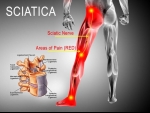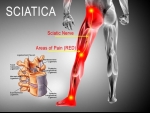Home »
Blog » Pain Management
| Stem Cell, PRP, Acupuncture in Queens & Long Island, New York
Pain Management | Stem Cell, PRP, Acupuncture in Queens & Long Island, New York
The duration of sciatica typically depends on the type and severity of the underlying problem. While sciatica usually resolves within a few weeks, certain medical conditions can cause your symptoms to last up to two years. Read on to learn about the common causes of sciatica, when your symptoms may continue to persist, and common treatments and tips to help prevent your back and leg pain from recurring or flaring.
Read more
Our experience of pain can have a lot to do with our past – especially when our past includes trauma. Research is showing us that the severity of a pain problem, even including levels of physical disability, can be influenced by traumatic events from earlier in life without us even knowing it. In fact, studies on this subject have found that the presence of past trauma was associated with a two-fold to three-fold increase in the subsequent development of chronic widespread pain, and reports of abuse in childhood were associated with as much as a 97% increase in risk for chronic pain in adulthood.
Read more
Guided imagery and visualization practices are one of the most powerful ways to find relief from persistent pain. Imagine you are a ballet dancer. You are lean, toned, strong, and graceful. Your daily life consists of hours of technique training, pointe classes, stretching and conditioning, rehearsals, and performances. You are a member of the corps de ballet and you want to be promoted to a principal dancer. As the day of the performance draws closer, you spend half an hour visualizing yourself dancing the elegant movements required of your career each morning.
Read more
Knee pain that cannot be traced back to a physical injury may be caused by a problem in your lower back. The muscles around your knees are powered by nerves that originate in your lower spine. Irritation or compression of these nerves at their spinal origin causes symptoms, commonly known as sciatica, which may include knee pain and/or weakness. Read on to learn about how knee pain may feel in the sciatica as well as common examples of lower back and other conditions that mimic sciatica pain in the knee.
Read more
You don’t need to “run a marathon” or do anything strenuous to feel super fatigued. Even after a good night’s sleep, you can wake up feeling very tired and heavy, like you were run over by a truck. It can force you to cancel or reschedule your plans and stay in bed all day. It’s frustrating at times when the people around you don’t understand what fatigue feels like. Or even worse, when they think they understand and try to relate to you and say: “I know, I feel like that sometimes, too,” or “Just sit down for a little bit, you’ll be fine,” or “Did you sleep last night?” And when you explain to them, they still don’t get it.
Read more
What is mindfulness meditation and how can it help to relieve chronic pain? Emotions, thoughts, and perspectives can all have an impact on the way we experience pain. Non-pharmacological interventions such as mindfulness are becoming more widely researched and are viable alternatives or adjunctive therapies for individuals living with chronic pain. Mindfulness-based approaches have been found to positively impact individuals with various pain conditions in terms of decreasing pain, improving quality of life, functioning, and pain acceptance.
Read more
Coccydynia, commonly called tailbone pain refers to persistent pain at the very bottom of your spine. You may develop this pain after direct trauma or spontaneously without a specific inciting factor. The pain typically lasts for weeks to months and can become debilitating. This blog outlines all you need to know about your tailbone (coccyx), including the specific causes, symptoms, and treatments for tailbone pain.
Read more
If you’ve seen the regular stream of stories in the media about the “opioid epidemic,” the thought of starting an opioid pain medication might make you a little uneasy. But if you are scheduled for elective surgery, dental work, or experience an acute injury, your doctor is likely to prescribe one – an estimated 1 out of every 5 patients with non-cancer pain are prescribed opioids by their doctors. So how can you make sure you don’t turn into a bad statistic?
Read more
Pain is one of a series of sensory systems in the human body, including the visual system (sight), the auditory system (hearing), the olfactory system (smell), the gustatory system (taste), and the somatosensory system (touch). While many consider pain to be a part of the somatosensory system/touch system, actually pain has its own dedicated pathways in the body and spinal cord, as well as its own unique areas in the brain. This makes sense when you think of what the purpose of the pain system is.
Read more
Engaging in a routine yoga program targeted to treat scoliosis may help reduce the severity, correct your spinal posture, and/or improve balance. To help you kickstart a yoga routine, here are 4 easy yoga poses that you can try at home with a yoga mat or a thick towel. It is important to start slow and easy, and as with any exercise, always check with your doctor or therapist first.
1. Mountain Pose - This is a great pose for beginning your yoga practice. It helps with balance and core strength, and it is a pose that requires you to stand tall and steady, like a mountain.
Read more
Love this Post? Spread the World






















